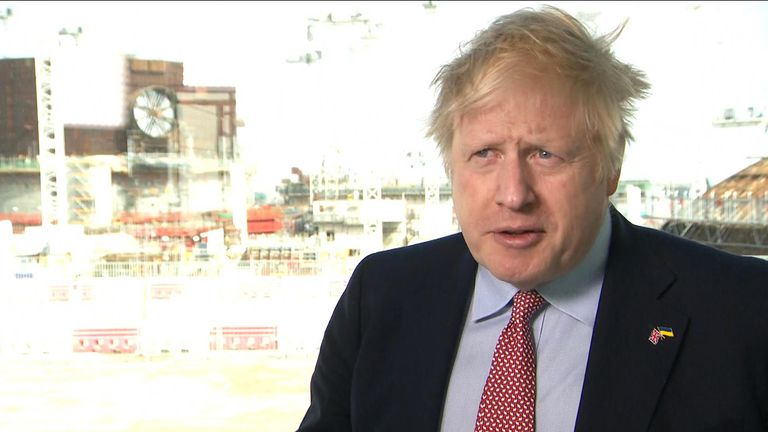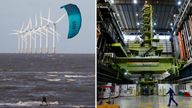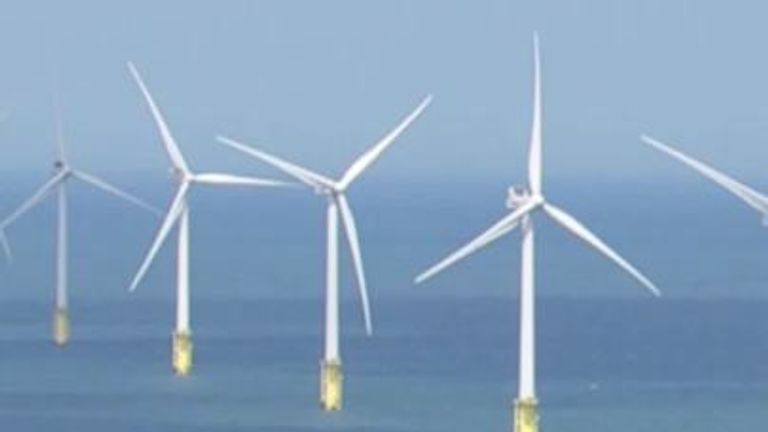The Energy Security Strategy has something in it to disappoint everyone
The Energy Security Strategy amounts to a huge bet on offshore wind, hedged by an uncosted and almost certainly undeliverable commitment to nuclear power, with an insurance policy in the shape of North Sea oil and gas.
In security terms, it makes sense – a pursuit of proven technologies in a suddenly uncertain energy environment.
Viewed through any other lens, the strategy disappoints.
Historically stretched consumers will note it does nothing to reduce bills and environmentalists will question the strategy’s compatibility with net zero goals.
Rushed out at the prime minister’s request in the 40 days after the invasion of Ukraine demonstrated European reliance on Russian gas, it’s no surprise the strategy leans heavily on existing sources of power.
Offshore wind is the safest horse to back in breezy Britain’s renewables field, though the 50GW target – enough to power every home for a day – is a stretch and industry sources are sceptical.
The target date is just eight years away, yet it can take a decade for new schemes to receive consent. The strategy promises to cut the process from four years to one.
There are questions too about the supply chain. Wind power is in demand across northern Europe and beyond, and the domestic turbine industry will not come close to meeting the required volume.
Creating the capacity and connectivity on the grid is also a pivotal challenge. With the majority of offshore power planned for Scotland, and most of the British population to the south, there is a lot of cable to lay.
Nuclear power provides a predictable power base, and with our current stock of reactors due to go out of service, a plan was required.
The promise of a new reactor every year until 2030 is unrealistic, however, particularly without Treasury backing, and the small modular reactors promised in the plan are yet to be put into service.
Given gas will remain a crucial transitional fuel for at least a decade, new North Sea licences may offer some security of supply, even if they do nothing to address price.
They are incompatible, however, with the verdict of the UN secretary general who said this week that “investing in new fossil fuels infrastructure is moral and economic madness”.
Of the alternative renewable sources, only green hydrogen is fully backed, with a doubling of target capacity. Britain has a burgeoning industry and plentiful renewable energy to drive it.
Produced without emissions, it has the potential to replace natural gas in industrial processes like fuel and fertiliser production, and has applications in heating and transport.
Green hydrogen can also play a part in balancing the grid, taking excess power in times of abundance to create hydrogen that can be stored.
Onshore wind, however, has been sacrificed on the altar of party management. The quickest and cheapest route to renewable power, new developments have been blocked for seven years by unique planning laws.
Those restrictions will remain in place after Conservative MPs, including some in the Cabinet, persuaded ministers to put anxiety about local objections ahead of energy needs, despite their views being in the minority.
The government’s own polling, published in the business department’s public attitudes survey, shows 80% support for onshore wind.
And the strategy has little new to say and even less to spend on cutting demand, the fastest way to also cut bills.
The vast and necessary job of insulating Britain’s aging housing stock for a low carbon future is not addressed, leaving a reduction in bills as distant as the wind turbines that will eventually provide the power.






